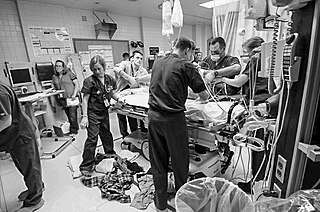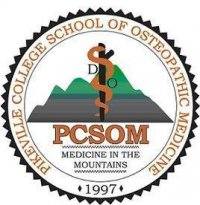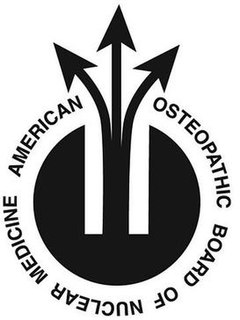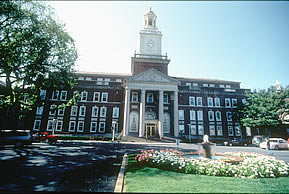
Emergency medicine is the medical speciality concerned with the care of illnesses or injuries requiring immediate medical attention. Emergency physicians continuously learn to care for unscheduled and undifferentiated patients of all ages. As first-line providers, in coordination with Emergency Medical Services, they are primarily responsible for initiating resuscitation and stabilization and performing the initial investigations and interventions necessary to diagnose and treat illnesses or injuries in the acute phase. Emergency physicians generally practise in hospital emergency departments, pre-hospital settings via emergency medical services, and intensive care units. Still, they may also work in primary care settings such as urgent care clinics.

Osteopathy is a type of alternative medicine that emphasizes physical manipulation of the body's muscle tissue and bones. Practitioners of osteopathy are referred to as osteopaths.
Osteopathic medicine is a branch of the medical profession in the United States that promotes the practice of allopathic medicine with a set of philosophy and principles set by its earlier form, osteopathy. Osteopathic physicians (DOs) are licensed to practice medicine and surgery in all 50 US states. Only graduates of American osteopathic medical colleges may practice the full scope of medicine and surgery generally considered to be medicine by the general public; US DO graduates have historically applied for medical licensure in 87 countries outside of the United States, 85 of which provided them with the full scope of medical and surgical practice. The field is distinct from osteopathic practices offered in nations outside of the U.S., whose practitioners are generally not considered part of core medical staff nor of medicine itself. The other major branch of medicine in the United States is referred to by practitioners of osteopathic medicine as allopathic medicine.
An emergency physician is a physician who works at an emergency department to care for ill patients. The emergency physician is a specialist in advanced cardiac life support, resuscitation, trauma care such as fractures and soft tissue injuries, and management of other life-threatening situations.

The American Osteopathic Association (AOA) is the representative member organization for the more than 176,000 osteopathic medical doctors (D.O.s) and osteopathic medical students in the United States. The AOA is headquartered in Chicago, Illinois, and is involved in post-graduate training for osteopathic physicians. Beginning in 2015, it began accrediting post-graduate education as a committee within the Accreditation Council for Graduate Medical Education, creating a unified accreditation system for all DOs and MDs in the United States. The organization promotes public health, encourages academic scientific research, serves as the primary certifying body for D.O.s overseeing 18 certifying boards, and is the accrediting agency for osteopathic medical schools through its Commission on Osteopathic College Accreditation. As of October 2015, the AOA no longer owns the Healthcare Facilities Accreditation Program (HFAP), which accredited hospitals and other health care facilities.
Most physicians in the United States hold either the Doctor of Medicine degree (MD) or the Doctor of Osteopathic Medicine degree (DO). Institutions awarding the MD are accredited by the Liaison Committee on Medical Education (LCME). Institutions awarding the DO are accredited by the Commission on Osteopathic College Accreditation (COCA). The World Directory of Medical Schools lists both LCME accredited MD programs and COCA accredited DO programs as US medical schools. Foreign-trained osteopaths do not hold DO degrees and are not recognized as physicians in the United States or in other jurisdictions.
The American Board of Physician Specialties (ABPS), the official certifying body for the American Association of Physician Specialists (AAPS) is a non-profit umbrella organization for sixteen medical specialty boards that certifies and re-certifies physicians in fourteen medical specialties in the United States and Canada. The ABPS is one of three organizations overseeing Doctor of Medicine (M.D.) and Doctor of Osteopathic Medicine (D.O.) certification in the United States. The ABPS assists its Member Boards in developing and implementing educational and professional standards to evaluate and certify physician specialists. It is recognized by the U.S. Department of Labor as well as the Centers for Medicare and Medicaid Services (CMS).
Doctor of Osteopathic Medicine is a medical degree conferred by the 38 osteopathic medical schools in the United States. DO and Doctor of Medicine (MD) degrees are equivalent: a DO graduate may become licensed as a physician or surgeon and thus have full medical and surgical practicing rights in all 50 US states. As of 2021, there were 168,701 osteopathic physicians and medical students in DO programs across the United States. Osteopathic medicine emerged historically from osteopathy, but has become a distinct profession.

The American College of Osteopathic Family Physicians (ACOFP) is a professional association and a medical specialty college in the United States. Its membership consists of osteopathic physicians who practice family medicine, residents and medical students. ACOFP is closely affiliated with the American Osteopathic Association and is the osteopathic equivalent of the American Academy of Family Physicians. Much of the association's activities involve addressing the chronic shortage of family practitioners in the United States. It is responsible for setting the standards for the inspection of osteopathic graduate medical education programs in family practice.
The Canadian Osteopathic Association (COA) is a professional association of osteopathic physicians in Canada. The COA has partnered with Michigan State University College of Osteopathic Medicine to increase the number of osteopathic physicians practising in Canada.
Bryan E. Bledsoe D.O., FACEP, EMT-P, is an emergency medicine physician, paramedic, author and educator. Bledsoe is Clinical Professor of Emergency Medicine in the Department of Emergency Medicine at the University of Nevada School of Medicine. He is also Clinical Professor of Emergency Medicine in the Department of Emergency Medicine at University Medical Center of Southern Nevada in Las Vegas.

The American Osteopathic Board of Emergency Medicine (AOBEM) is an organization that provides board certification to qualified Doctors of Osteopathic Medicine who specialize in the medical and surgical treatment of acutely ill patients with advanced cardiac life support, trauma, and the management of other life-threatening medical issues. The AOBEM is one of 18 medical specialty certifying boards of the American Osteopathic Association Bureau of Osteopathic Specialists approved by the American Osteopathic Association (AOA).
The American Academy of Emergency Medicine (AAEM) is a nonprofit professional medical association of emergency medicine physicians. It was formed in 1993 is based out of Milwaukee, Wisconsin.
In 2006, hospice and palliative medicine was officially recognized by the American Board of Medical Specialties, and is co-sponsored by the American Boards of

The University of Pikeville - Kentucky College of Osteopathic Medicine (UP-KYCOM) is the medical school of University of Pikeville in Pikeville, Kentucky. UP-KYCOM was established in 1997, grants the Doctor of Osteopathic Medicine degree. It is accredited by the Commission on Osteopathic College Accreditation (COCA) and the Commission on Colleges of the Southern Association of Colleges and Schools.
The American Osteopathic Board of Preventive Medicine (AOBPM) is an organization that provides board certification to qualified Doctors of Osteopathic Medicine (D.O.) who specialize in aiding patients in the prevention of injury or disease. The board is one of 18 physician medical specialty boards of the American Osteopathic Association Bureau of Osteopathic Specialists of the American Osteopathic Association (AOA). The AOBPM was established in 1982 by approval by the Board of Trustees of the American Osteopathic Association. The AOBPM provides board certification for eligible physicians. Additionally, along with fellows of the American Board of Preventive Medicine, fellows of the American Osteopathic Board of Preventive Medicine are eligible to become fellows of the Undersea and Hyperbaric Medical Society. As of December 2011, 176 osteopathic physicians held active membership with the AOBPM.
The American Osteopathic Board of Neurology and Psychiatry (AOBNP) is an organization that provides board certification to qualified Doctors of Osteopathic Medicine (D.O.) who specialize in disorders of the nervous system (neurologists) and to qualified Doctors of Osteopathic Medicine who specialize in the diagnosis and treatment of mental disorders (psychiatrists).

The American Osteopathic Board of Nuclear Medicine (AOBNM) is an organization that provides board certification to qualified Doctors of Osteopathic Medicine (D.O.) who specialize in the use of radioactive substances in the diagnosis and treatment of disease. The board is one 18 medical specialty certifying boards approved by the American Osteopathic Association Bureau of Osteopathic Specialists (AOABOS) of the American Osteopathic Association, and was established in 1974. As of December 2011, 32 osteopathic nuclear medicine physicians held active certification with the AOBNM.

The Reading Hospital is a 738-bed non-profit teaching hospital located in the borough of West Reading, in the US state of Pennsylvania. The hospital was established in 1867 and is a part of Tower Health System. The hospital is a certified stroke center, and the emergency department includes a level I trauma center. The hospital operates several residency training programs for newly graduated physicians such as internal medicine, internal medicine osteopathic, transitional year, family medicine, OB/GYN, emergency medicine, anesthesiology, general surgery, neurology, podiatric surgery & psychiatry. One year pharmacy residency is also offered. The residency programs are accredited by the Accreditation Council for Graduate Medical Education. The internal medicine residency is also accredited by the American Osteopathic Association.

Peter Alan Bell, DO, MBA, FACOEP-dist, FACEP is an American osteopathic physician. He has been president of the Ohio Osteopathic Association (OOA) the National President of The American College of Osteopathic Emergency Physicians (ACOEP), and has represented the osteopathic medical profession in national health policy concerns.









